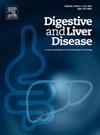儿童肝移植后的长期预后和向成人护理的过渡:帕多瓦大学医院30年的经验
IF 3.8
3区 医学
Q1 GASTROENTEROLOGY & HEPATOLOGY
引用次数: 0
摘要
儿童肝移植(pLT)提供了良好的生存率,使许多患者达到成年并过渡到成人医疗保健服务(AHS)。目的:描述在帕多瓦大学医院接受pLT的患者的短期和长期结果,重点关注过渡到AHS后的理想结果。材料与方法纳入1993 - 2022年间所有接受pLT的患者。评估短期(即6个月)和长期(即≥20年)结局。对于那些过渡到AHS的患者,达到理想结果的比率(定义为完美的移植物功能,无免疫抑制副作用,无晚期relt)被评估。结果167例儿童进行了197例移植,其中男性90例(53.8%),移植时中位年龄4岁。胆道闭锁是最常见的基础疾病(31%),而肿瘤指征占16%。1年、5年、10年和20年的患者和移植物存活率分别为87%、84%、80%和76%,以及76%、75%、70%和63%。19例(11%)患者在第一次pLT后存活不超过6个月,多变量分析中确定需要紧急重新lt是唯一独立的生存预测因子(p = 0.05)。在27例患者中,在分析时,pLT后存活≥20年,除1例外,其余患者仍在接受免疫抑制;7例(26%)发生了至少一种主要的医学并发症,1例(3.7%)因慢性排斥而进行了再肝移植,1例(3.7%)死于败血症。在48例转化为AHS的患者中,分别有47%、44%和45%的患者在转化后12个月、36个月和60个月达到了理想的结果。结论:在pLT患者的长期随访期间,与移植物相关或无关的医学并发症显著影响整体健康和理想结局的实现。本文章由计算机程序翻译,如有差异,请以英文原文为准。
Long-Term Outcomes and Transition to Adult Care After Pediatric Liver Transplantation: A 30-Year Experience from Padua University Hospital
Introduction
Pediatric liver transplantation (pLT) offers excellent survival rates, enabling many patients to reach adulthood and transition to the adult healthcare service (AHS).
AIM
To describe the short- and long-term outcomes of patients who underwent pLT at Padua University Hospital, focusing on the achievement of ideal outcome after transitioning to AHS.
Materials and Methods
All patients who underwent pLT between 1993 and 2022 were included. Short- (i.e., 6 months) and long-term (i.e., ≥20 years) outcomes were assessed. For those who transitioned to AHS, the rate of achieving an ideal outcome—defined as a combination of perfect graft function, no immunosuppression side effects, and no late reLT—was evaluated.
Results
197 pLTs were performed in 167 children (90 males [53.8%], median age at transplant 4 years). Biliary atresia was the most common underlying condition (31%), while oncological indications accounted for 16% cases. Patient and graft survival rates at 1, 5, 10, and 20 years were 87%, 84%, 80%, and 76%, and 76%, 75%, 70%, and 63%, respectively. Nineteen (11%) patients did not survive beyond 6 months after their first pLT, with the need for urgent re-LT identified as the only independent predictor of survival in multivariate analysis (p = 0.05). Among 27 patients who, at the time of analysis, had survived ≥20 years after pLT, all but one were still receiving immunosuppression; 7(26%) developed at least one major medical complication, 1(3.7%) underwent re-LT due to chronic rejection, and 1(3.7%) died of sepsis. Of the 48 patients who transitioned to AHS, an ideal outcome was achieved in 47%, 44%, and 45% of patients at 12, 36, and 60 months after transition, respectively.
Conclusions
Medical complications, whether related or unrelated to the graft, during the long-term follow-up of patients undergoing pLT significantly impact global health and the achievement of an ideal outcome.
求助全文
通过发布文献求助,成功后即可免费获取论文全文。
去求助
来源期刊

Digestive and Liver Disease
医学-胃肠肝病学
CiteScore
6.10
自引率
2.20%
发文量
632
审稿时长
19 days
期刊介绍:
Digestive and Liver Disease is an international journal of Gastroenterology and Hepatology. It is the official journal of Italian Association for the Study of the Liver (AISF); Italian Association for the Study of the Pancreas (AISP); Italian Association for Digestive Endoscopy (SIED); Italian Association for Hospital Gastroenterologists and Digestive Endoscopists (AIGO); Italian Society of Gastroenterology (SIGE); Italian Society of Pediatric Gastroenterology and Hepatology (SIGENP) and Italian Group for the Study of Inflammatory Bowel Disease (IG-IBD).
Digestive and Liver Disease publishes papers on basic and clinical research in the field of gastroenterology and hepatology.
Contributions consist of:
Original Papers
Correspondence to the Editor
Editorials, Reviews and Special Articles
Progress Reports
Image of the Month
Congress Proceedings
Symposia and Mini-symposia.
 求助内容:
求助内容: 应助结果提醒方式:
应助结果提醒方式:


